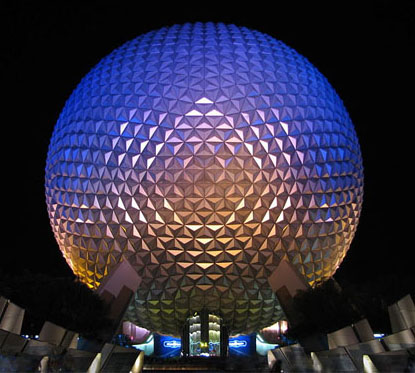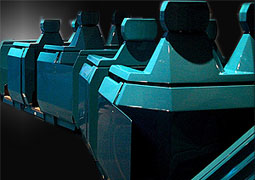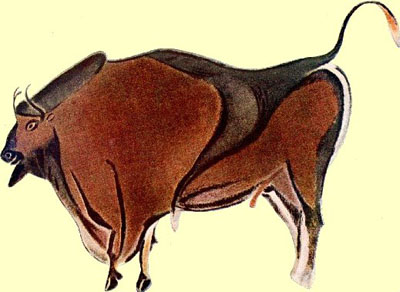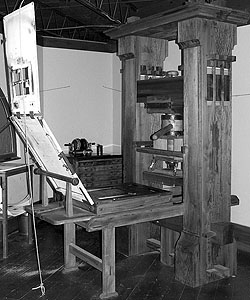The Past and the Future
by Andrew Boyd
Today, the future — one step at a time. The University of Houston's College of Engineering presents this series about the machines that make our civilization run, and the people whose ingenuity created them.
It's arguably the most famous ball in the world. Standing eighteen stories tall, the surface isn't quite round. It's made of over eleven thousand raised metal triangles. It's a beautiful structure; though, teed up on its foundation, it looks a lot like the world's largest golf ball.

Spaceship Earth at Disney's EPCOT theme park.
Spaceship Earth is the most recognizable symbol at Disney's Epcot theme park. I recently had the chance to visit when I was in Orlando giving a talk about mathematics and balls. And the ride housed within the great orb was better than I ever anticipated.
The narrator tells us what to expect as we slowly rise into the dark cavity.  "Since the dawn of recorded history," she begins, "we've been inventing the future one step at a time. So let's travel back in time together. I'll show you how our how our ancestors created the world we know today, and then it will be your turn to create the world of tomorrow." Ambitious goals, I think to myself, for a twelve minute animatronic ride.
"Since the dawn of recorded history," she begins, "we've been inventing the future one step at a time. So let's travel back in time together. I'll show you how our how our ancestors created the world we know today, and then it will be your turn to create the world of tomorrow." Ambitious goals, I think to myself, for a twelve minute animatronic ride.
But I'm not disappointed. As the scenes unfold, I can see the Disney imagineers have chosen a simple, powerful theme. The ride makes its point — and it's a good one.
We're first introduced to prehistoric cave paintings. The earliest such paintings date back over thirty thousand years. Wherever this story's going, that leaves a lot of ground to cover in the next few minutes.

Facsimile of a palaeolithic painting of a bison in Spain's Altamira Cave
(from the 1911 Encyclopaedia Britannica)
Next comes the use of papyrus as a writing material, the Phoenician alphabet, the Greek educational system, and advances in the teaching of science and mathematics. We're told about the vast road network built by the Roman Empire, which the narrator calls "the first world-wide-web." I'm beginning to sense where all of this is going.
 We see the ancient library of Alexandria, monks transcribing books, and Gutenberg's printing press. The printing press is given credit for fueling an "incredible explosion of innovation" as we view scenes of the Renaissance. Fast forward. Newspapers, telegraphs, radios, telephones, and televisions crowd around us. We see flashing computers as big as rooms surrounded by engineers in white lab coats. And a little later, a shaggy computer geek in his garage, trying to build a computer small enough to fit on his desktop.
We see the ancient library of Alexandria, monks transcribing books, and Gutenberg's printing press. The printing press is given credit for fueling an "incredible explosion of innovation" as we view scenes of the Renaissance. Fast forward. Newspapers, telegraphs, radios, telephones, and televisions crowd around us. We see flashing computers as big as rooms surrounded by engineers in white lab coats. And a little later, a shaggy computer geek in his garage, trying to build a computer small enough to fit on his desktop.
The ride's message is clear. Our civilization is built on communication. But not just any communication. It's built on a foundation of information and accumulated knowledge. If we see a little further with each passing generation, it's only because we stand on the shoulders of those who came before us. And it's our responsibility to preserve and impart that knowledge to those who come after us.
Disney reminds us that the way we transmit knowledge has changed. And we're living through the fastest, most exciting changes in history—right now. Pinch yourself. The next few decades promise to be a wild ride.
I'm Andy Boyd at the University of Houston, where we're interested in the way inventive minds work.
Spaceship Earth (Epcot). From the Wikipedia web site: https://en.wikipedia.org/wiki/Spaceship_Earth_(Epcot). Accessed September 3, 2008.
Epcot photos are courtesy of Wikipedia and Creative Commons.
Gutenberg's printing press photograph by J. H. Lienhard.